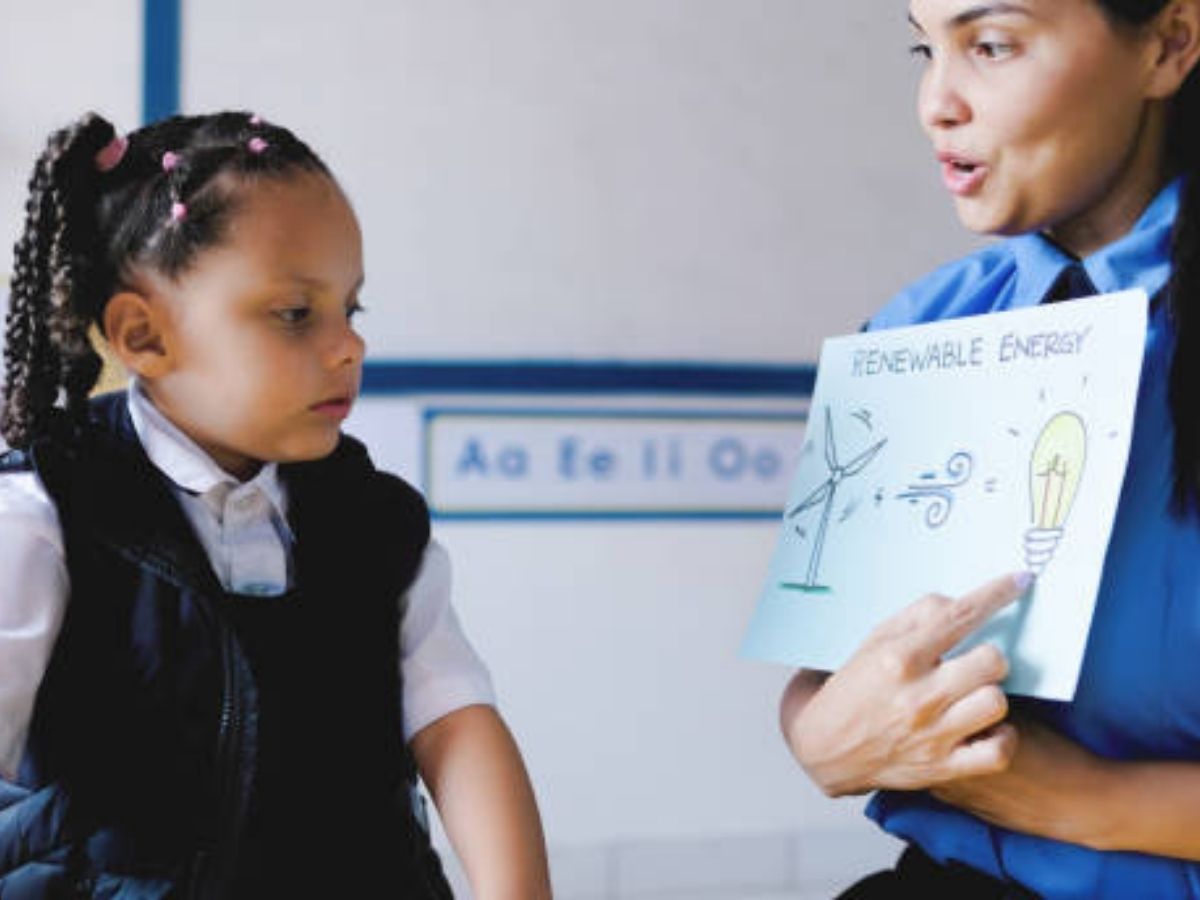Article
The Future of Daycare from Conference Experts
Insights from the Conference
Overview of the Daycare Industry
The daycare industry plays a vital role in supporting families and fostering early childhood development. Recent trends show significant growth in enrollment numbers, reflecting a rising demand for quality care services. Experts at the conference highlighted key statistics that showcase the current state of the industry.
2018:
- Enrollment Rate (%): 55
- Number of Daycare Facilities: 100,000.
2019:
- Enrollment Rate (%): 58
- Number of Daycare Facilities: 102,500.
2020:
- Enrollment Rate (%): 60
- Number of Daycare Facilities: 105,000.
2021:
- Enrollment Rate (%): 63
- Number of Daycare Facilities: 108,000.
This growth indicates a positive outlook for daycare centers, yet challenges remain, including staffing issues, funding, and the need for innovative practices to deliver high-quality services.
Key Discussions on the Future of Daycare
At the conference, numerous discussions centered around the future of daycare, addressing various factors that will influence the sector.
- Technological Integration: Experts discussed the increasing role of technology in daycare operations, highlighting how digital tools can streamline processes, improve communication, and enhance educational experiences.
- Changing Demographics: Presenters noted that shifting demographics in family structures and parental roles will affect the services offered by daycare centers, necessitating adaptability in programming.
- Policy and Regulation: Panelists emphasized the need for daycare centers to stay updated with evolving regulations and policies, which can impact funding, staffing, and operational procedures.
- Focus on Health and Safety: The importance of maintaining high health and safety standards was a recurring theme, especially in light of recent global health concerns.
- Sustainability Initiatives: Many speakers called for the incorporation of sustainable practices in daycare facilities, reflecting a growing awareness of environmental issues and their relevance in early childhood education.
These insights into the future of daycare from conference experts indicate both challenges and opportunities within the industry, as stakeholders look to adapt and thrive in the coming years.
Technology Advancements
In a rapidly changing environment, technology plays a significant role in shaping the future of daycare. The adoption of innovative methods enhances service delivery, operational efficiency, and overall experience for children and parents.
Impact of Technology on Daycare Services
The integration of technology into daycare services has transformed various aspects of care and education. Many facilities have implemented digital tools to streamline communication, manage enrollment and payment processes, and track child development. This shift has led to improved transparency and engagement for parents.
Digital Communication Tools:
- Percentage of Daycare Centers Using It: 75%.
Child Development Tracking Software:
- Percentage of Daycare Centers Using It: 62%.
Online Enrollment Systems:
- Percentage of Daycare Centers Using It: 55%.
Parent Engagement Apps:
- Percentage of Daycare Centers Using It: 49%.
As the data illustrates, a majority of daycare centers are utilizing technology to enhance their services.
Innovation Trends in Daycare Operations
Daycare facilities are also witnessing innovative trends that focus on both operational efficiency and enriching child experiences. Smart technologies, such as automated attendance systems and age-appropriate educational apps, are creating tailored learning environments.
Smart Attendance Systems:
- Adoption Rate: 60%.
Interactive Learning Applications:
- Adoption Rate: 70%.
Online Training for Staff:
- Adoption Rate: 53%.
Virtual Tours for Parents:
- Adoption Rate: 48%.
The trends show a clear shift toward automation and interactive learning solutions that benefit both staff and children, reflecting the conference experts' insights on the future of daycare.
Ultimately, the advancements in technology and innovative practices are charting a new course for daycare services, focusing on enhanced experiences and efficient operations.
Changing Regulations and Policies
As the landscape of daycare evolves, regulatory updates play a critical role in shaping the industry. This section will explore recent changes in daycare regulations and how these policy shifts affect childcare centers.
Updates in Daycare Regulations
Recent discussions at conferences highlighted significant updates in daycare regulations aimed at improving child safety and enhancing educational standards. Various states have implemented new requirements for staffing, facility inspections, and curriculum standards. These updates reflect a broader commitment to ensuring high-quality care in daycare settings.
Staff-to-Child Ratio Improvement:
- Effective Date: January 2024
- Description: New ratios established for better supervision.
Enhanced Safety Inspections:
- Effective Date: March 2023
- Description: More frequent inspections to ensure safety.
Curriculum Standards for Early Learning:
- Effective Date: August 2023
- Description: Requirements for age-appropriate educational programs.
How Policy Changes Influence Daycare Centers
Policy changes have a direct impact on daycare centers, often necessitating adjustments in operations and funding. These shifts can affect staffing requirements, budget allocations, and training needs. Compliance with new regulations often requires centers to invest in resources or staff training.
Staffing Requirements:
- Potential Impact: Increased hiring and training needs.
Financial Management:
- Potential Impact: Need for budget adjustments to meet compliance costs.
Program Development:
- Potential Impact: Introduction of new curriculum and assessments.
Understanding the relationship between updated regulations and the operational dynamics of daycare centers is essential. As the industry adapts to these changes, the focus remains on providing safe and enriching environments for children.
Shifting Parental Expectations
As societal norms evolve, so do the expectations of parents regarding daycare services. These changes bring about new demands and preferences that daycare providers must consider to remain competitive and responsive to family needs.
Evolving Parental Demands in Daycare
Parents today prioritize various factors when selecting daycare programs for their children. According to recent surveys conducted among parents, the following aspects have emerged as key drivers in their decision-making process:
Safety and Security:
- Percentage of Parents Prioritizing: 85%.
Quality of Education:
- Percentage of Parents Prioritizing: 75%.
Affordability:
- Percentage of Parents Prioritizing: 67%.
Flexible Scheduling:
- Percentage of Parents Prioritizing: 60%.
Teacher Qualifications:
- Percentage of Parents Prioritizing: 55%.
Safety and security consistently rank highest among parental priorities, reflecting increasing concerns about child welfare. Additionally, many parents seek high-quality educational programs that foster development, alongside affordable options that alleviate financial burdens. Flexible scheduling is also becoming important as many parents juggle work commitments with childcare needs.
Catering to Modern Parental Preferences
To meet these evolving demands, daycare providers are simplifying their offerings while enhancing the overall experience for both parents and children. Providers are integrating various strategies to accommodate modern parental preferences.
Enhanced Safety Protocols:
- Implementation Examples: Increased monitoring, secure entry systems.
Structured Educational Programs:
- Implementation Examples: Early literacy and STEM-focused curricula.
Competitive Pricing Models:
- Implementation Examples: Sliding scale fees, sibling discounts.
Flexible Hours:
- Implementation Examples: Extended hours or weekend care options.
Qualified Staff:
- Implementation Examples: Continuous training and certifications.
By emphasizing safety protocols, enriching educational content, and offering flexibility, daycare centers can align more closely with the desires of parents. Moreover, investing in staff development ensures that caregivers are well-equipped to provide quality care.
These shifts in parental expectations and their impacts on daycare services indicate a clear trend towards a more responsive and supportive childcare environment.
Sustainability and Environmental Focus
The daycare sector is increasingly recognizing the importance of sustainability. Many facilities are adopting green practices that not only benefit the environment but also enhance the learning experience for children.
Green Practices in Daycare Facilities
Daycare centers are implementing various eco-friendly initiatives to reduce their carbon footprint and promote environmental awareness among young learners. These practices include the use of sustainable materials, energy-efficient appliances, and recycling programs.
Eco-friendly Cleaning Products:
- Description: Use of non-toxic, biodegradable cleaners.
- Benefits: Reduces harmful chemicals in the environment.
Energy-efficient Lighting:
- Description: Installation of LED lights.
- Benefits: Lowers energy consumption.
Recycling Programs:
- Description: Encouraging recycling of paper, plastic, and glass.
- Benefits: Instills environmental responsibility in children.
Outdoor Learning Environments:
- Description: Utilizing natural spaces for learning.
- Benefits: Promotes appreciation for nature.
Importance of Sustainability in the Daycare Sector
Adopting sustainable practices in daycare facilities serves multiple purposes. It not only helps the environment but also prepares children for future stewardship of the planet. Early exposure to eco-friendly behaviors is critical in shaping children’s values regarding sustainability.
Environmental Awareness:
- Impact: Educates children about ecology and conservation.
Health Benefits:
- Impact: Reduces exposure to harmful chemicals for children and staff.
Cost-Effectiveness:
- Impact: Potential savings on energy and resource use.
Community Leadership:
- Impact: Positions daycare centers as role models in sustainability.
As the daycare industry progresses, the shift toward a more environmentally focused approach will play a crucial role in shaping the future of daycare from a holistic perspective.
Professional Development and Training
The importance of professional development and training for daycare staff was a significant focus at the conference. Enhancing the skills and expertise of caregivers is vital for the advancement of the daycare industry.
Enhancing Staff Skills and Expertise
Daycare professionals play a crucial role in nurturing children's growth and development. Ongoing training helps them stay informed about the latest educational practices, child safety regulations, and behavioral management techniques. By enhancing their skills, staff can create a positive and enriching environment for children.
Child Development:
- Importance Level (1-5): 5.
Health & Safety:
- Importance Level (1-5): 4.
Communication:
- Importance Level (1-5): 4.
Cultural Competence:
- Importance Level (1-5): 3.
Behavior Management:
- Importance Level (1-5): 5.
Training Programs for Daycare Professionals
Various training programs exist to support the professional growth of daycare staff. These programs focus on equipping them with essential knowledge and practical skills. The following bullet list outlines some key training categories and their purposes:
First Aid and CPR:
- Purpose: Equip staff to handle emergencies and ensure safety.
Child Development Workshops:
- Purpose: Teach about developmental milestones and age-appropriate activities.
Behavior Management Seminars:
- Purpose: Provide strategies for managing children's behaviors effectively.
Health and Nutrition Training:
- Purpose: Educate on healthy meal preparation and dietary guidelines.
Cultural Competency Training:
- Purpose: Foster understanding and inclusivity in diverse environments.
Investing in such training programs not only enhances staff capabilities but also contributes to providing high-quality care for children, aligning with the future of daycare as discussed by conference experts.
Sources
https://www.younginnovatorsacademy.com/the-future-of-childcare-conference
https://www.unitedforalice.org/future-trends-child-care-education
Read:
What is Your Identity in Christ?
Watch: Identity & Action
TAGS:
Black Lives Matter | Martin Luther King Jr. |
Race and Ethnicity
LCBC stands for Lives Changed By Christ. We are one church in multiple locations across Pennsylvania. Find the location closest to you or join us for Church Online. We can’t wait to connect with you!
share this
Related Articles
Related Articles
STAY UP TO DATE
GET PATH'S LATEST
Receive bi-weekly updates from the church, and get a heads up on upcoming events.
Contact Us









